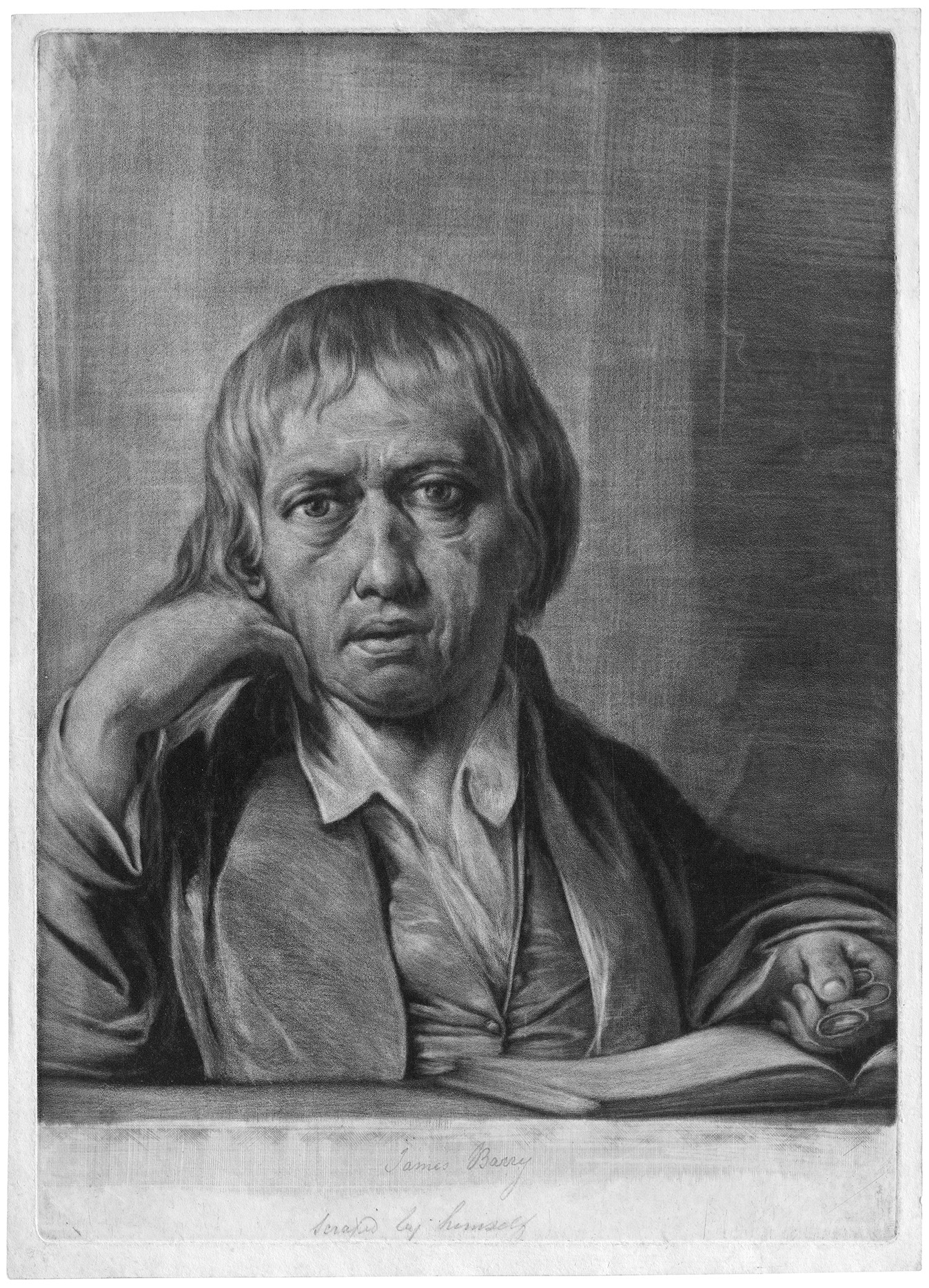Loading the page ...
James Barry
(1741 Cork – 1806 London)
Self-portrait. Mezzotint. 35.2 x 25 cm. “James Barry / Scraped by himself” inscribed in pencil in the lower margin. Circa 1802. Chaloner Smith 1883, 20; Pressly 36.
The young James Barry’s first historical paintings attracted the attention of the Irish author and philosopher, Edmund Burke, who invited him to London in 1764. Burke introduced the budding artist to Joshua Reynolds and Gilbert Stuart and paid for him to study in Rome for a number of years. After returning to London, Barry exhibited two paintings on biblical and mythological themes at the Royal Academy in 1771 and 1772, both of which were poorly received by the critics. Although the lack of
recognition accorded to his works meant he received no commissions for quite some time, he was nevertheless admitted to the Academy in 1773. In 1775 Barry published An Inquiry into the Real and Imaginary Obstructions to the Acquisition of the Arts in England, a provocative essay directed primarily against Winckelmann’s classical theory of art. Barry remained an eccentric and visionary artist throughout his life. His historical paintings, distinguished by the outstanding originality and extravagance of their iconography, are imbued with an unconventional, sombre lyricism which anticipates the aspirations of the Romantic period.
Barry was a loner in his time and spent the last years of his life in complete isolation and abject poverty. The present, very rare and highly impressive self-portrait conveys something of the melancholy he experienced in his life. It is based on a detailed pen-and-ink drawing Barry made of almost exactly the same size, which is now in the Royal Society of Arts in London (see William L. Pressly, The Life and Art of James Barry, New Haven and London, 1981, p. 192, no. 137). The artist, who has portrayed himself at a mature age, holds a pince-nez in his left hand and looks up with a pensive gaze from the book he is reading. He has a meditative expression on his face as if he were looking beyond the viewer into the far distance. The masterfully employed mezzotint technique is not needlessly distracted by details. On the contrary, it generates a feeling of expansiveness and freedom. Soft light entering from above brings out every detail of the artist’s physiognomy, giving it an almost sculptural quality. The typical mezzotint grain makes the neutral background appear vivid and generates surface patterns of great graphic delicacy.
A superb, subtly differentiated and harmonious impression with even margins. In pristine condition. Pressly records other impressions in the British Museum in London and the National Gallery of Ireland in Dublin.
Contact us for further information